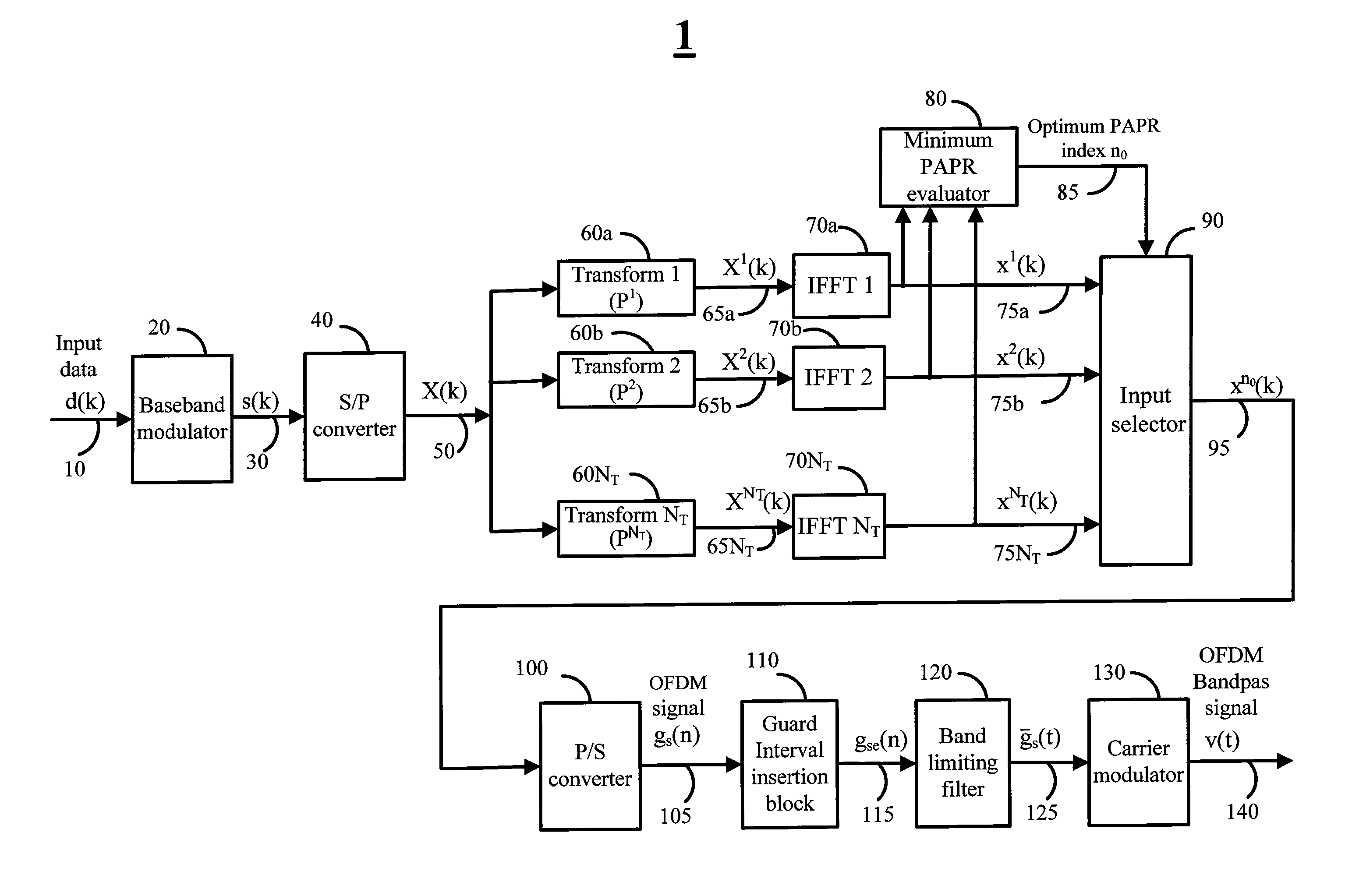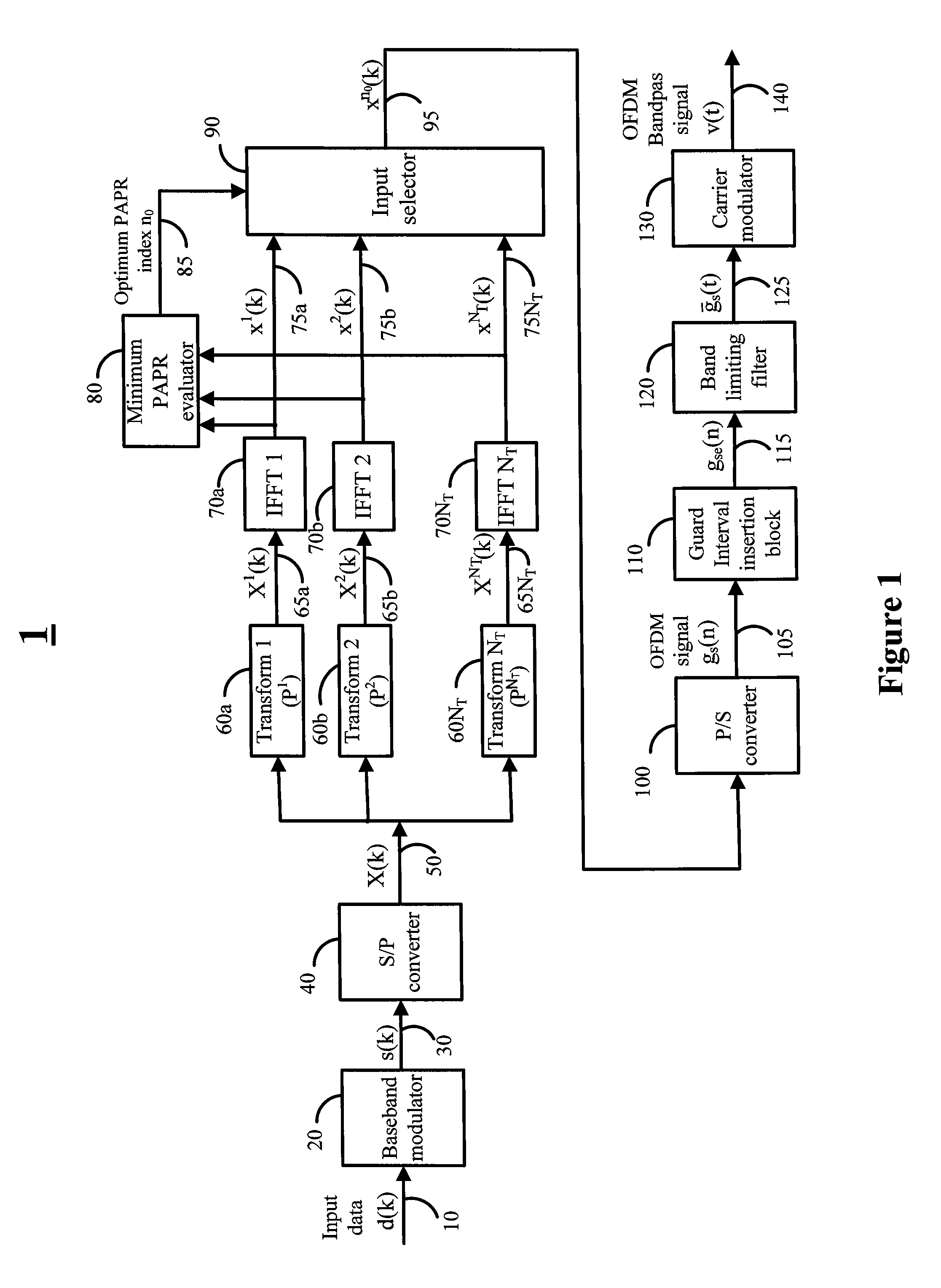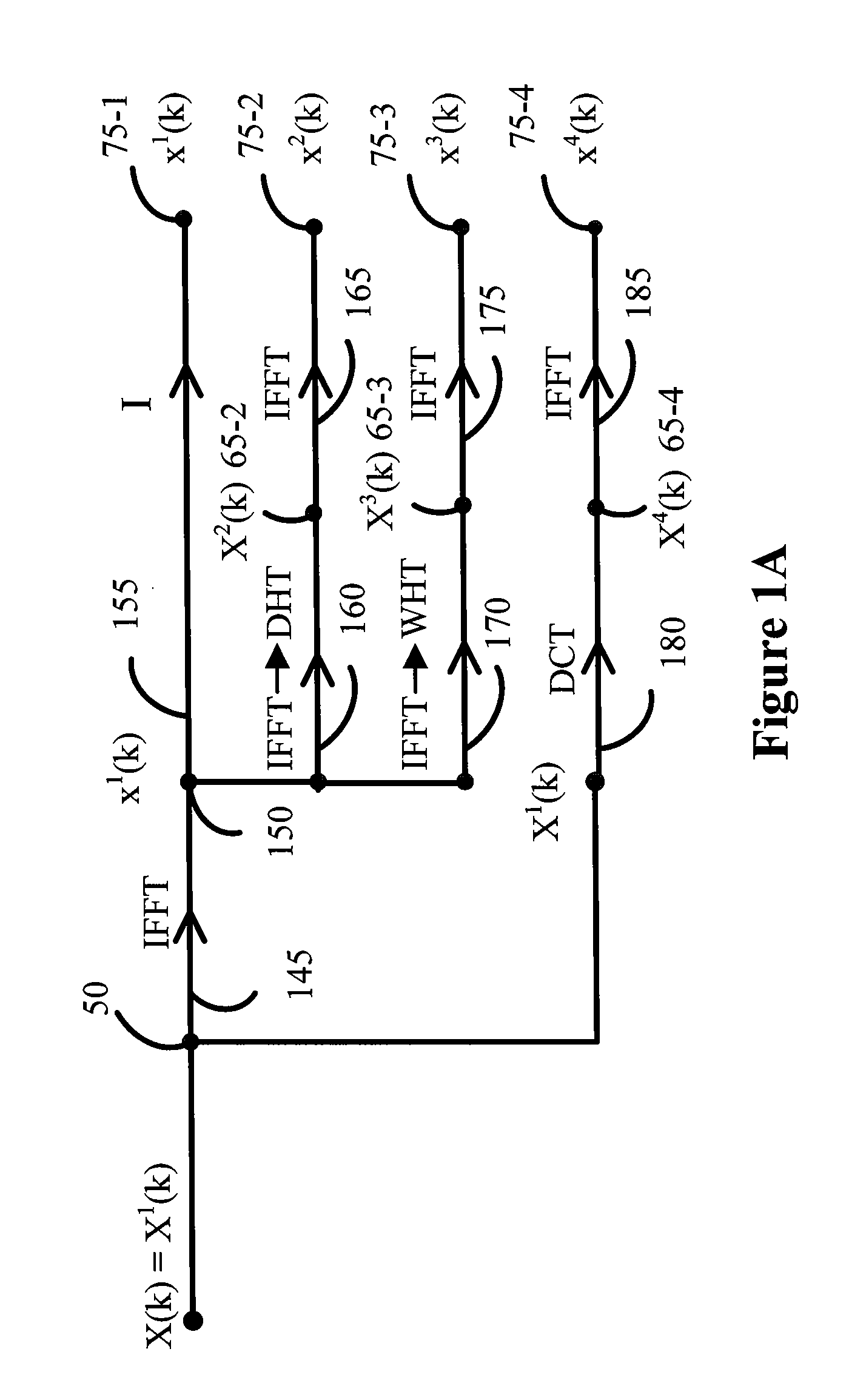Multi transform OFDM systems and methods with low peak to average power ratio signals
a technology of multi-transform and power ratio, which is applied in the field of multi-transform ofdm systems and methods with low peak to average power ratio signals, can solve the problems of increasing the drain on the battery or any other power supply source in the mobile device, reducing the efficiency of dc to rf power conversion and reducing the efficiency of rf power amplifier dc to rf power conversion, etc., to achieve low peak to average power ratio ratio
- Summary
- Abstract
- Description
- Claims
- Application Information
AI Technical Summary
Benefits of technology
Problems solved by technology
Method used
Image
Examples
Embodiment Construction
[0035]The following description is provided to enable any person skilled in the art to make and use the invention and sets forth the best modes contemplated by the inventor of carrying out his invention. Various modifications, however, will remain readily apparent to those skilled in the art, since the generic principles of the present invention have been defined herein specifically to provide systems and methods for multi transform OFDM systems with reduced peak to average power ratio signals.
[0036]FIG. 1 shows the block diagram of one of the various embodiments of the invention. Referring to the OFDM transmitter 1 block diagram in FIG. 1, the user input data 10 d(k) that may be binary valued taking possible values 0 and 1, wherein k denotes the discrete time, is inputted to the baseband modulator 20. The baseband modulator segments the input data into groups of m binary valued data bits and maps each of the groups of the m binary data bits into one of the M=2m, in general complex ...
PUM
 Login to View More
Login to View More Abstract
Description
Claims
Application Information
 Login to View More
Login to View More - R&D
- Intellectual Property
- Life Sciences
- Materials
- Tech Scout
- Unparalleled Data Quality
- Higher Quality Content
- 60% Fewer Hallucinations
Browse by: Latest US Patents, China's latest patents, Technical Efficacy Thesaurus, Application Domain, Technology Topic, Popular Technical Reports.
© 2025 PatSnap. All rights reserved.Legal|Privacy policy|Modern Slavery Act Transparency Statement|Sitemap|About US| Contact US: help@patsnap.com



